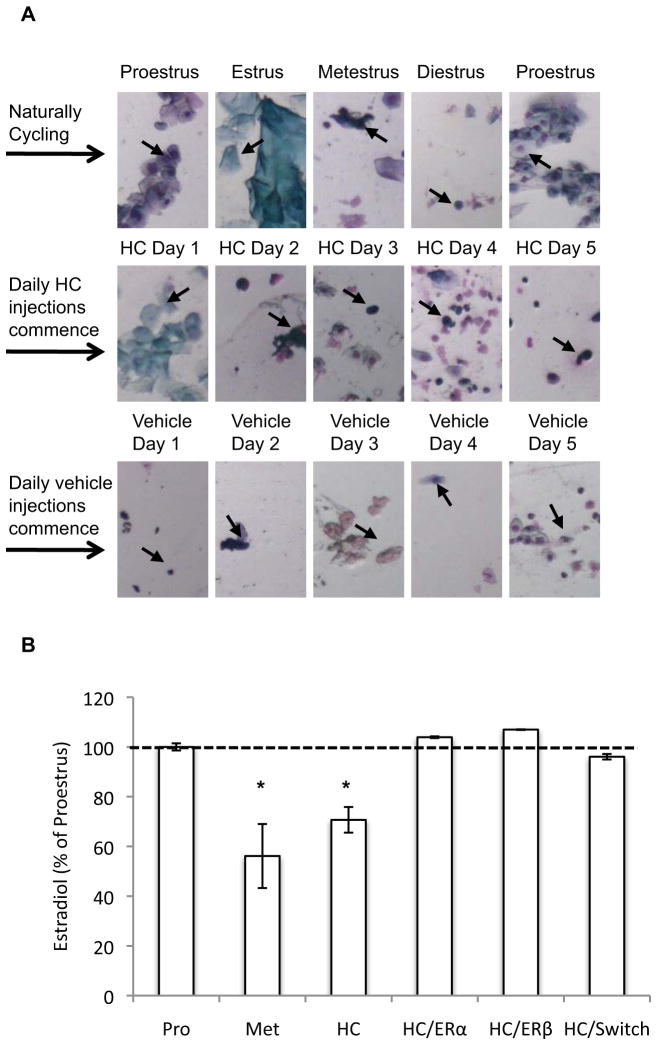Fig. 3.
(A) Representative vaginal cytology of a naturally cycling rat that received HC treatment for 5 days, and was then switched to vehicle treatment for another 5 days, during Experiment 3 (arrows denote cell types referred to in the following descriptions). A naturally cycling rat progresses through different stages of the estrous cycle on a daily basis (row 1). Nucleated epithelial cells characterize proestrus; cornified cells characterize estrus, leukocytes characterize metestrus, and scant leukocytes along with some non-nucleated and nucleated cells characterize diestrus. HC treatment (row 2) causes persistent metestrus-like cytology (predominantly leukocytes, emerging on HC Days 2–5). Switching the rat from HC to vehicle treatment (row 3) results in a gradual return to normal cycling. Note the reduction in leukocytes by Day 3, and the emergence of cytology consistent with diestrus and then proestrus on Days 4 and 5, respectively. (B) Serum estradiol from naturally cycling rats (N = 5/group) sacrificed during proestrus (Pro) and metestrus (Met), and from HC-treated rats sacrificed after 5 days of HC treatment (HC), 5 days of HC treatment and 1 hr after s.c. injection of an ERα (HC/ERα) or ERβ (HC/ERβ) agonist, and 5 days of HC treatment followed by a switch to vehicle treatment for another 5 days (HC/switch). Estradiol levels are presented as a percentage of those obtained from rats during proestrus. * = p<0.05; HC and Met vs. Pro, HC/ERα, HC/ERβ, and HC/switch.

